The Temple, Congregation B'nai Jehudah
Introduction
Text-to-speech Audio
Here marks the current location of The Temple, Congregation B’nai Jehudah is one of the oldest Reform Jewish Congregations in the nation and the oldest synagogue in the Kansas City metropolitan area. It is a center for locals of all ages in the Jewish community of Overland Park, Kansas. Founded in 1870 by a handful of pioneer families, it has historically had the largest number of members among local Jewish congregations. Towards the end of the 19th century, B’nai Jehudah became a founding member of the Union for Reform Judaism establishing its ambition to seek social improvement. The congregation has since been known nationally for its vision, leadership and progressive thinking. There is an unparalleled richness and diversity in the life of the congregation and an enthusiasm for social justice and committing to the needs of others.
Images
The chapel at B'nai Jehudah, 2021
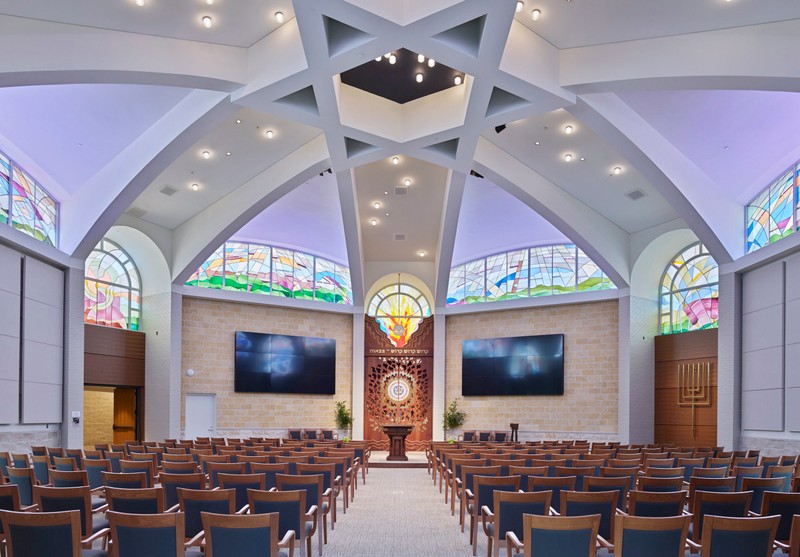
Front of the building, 2015
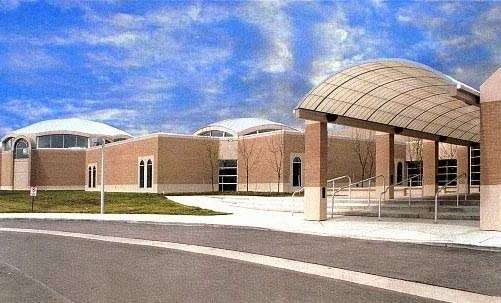
Newly renovated space in the halls, 2021
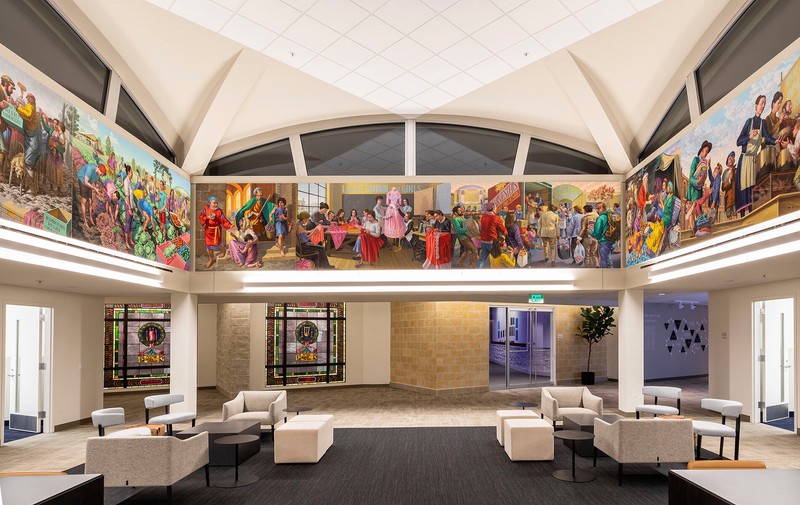
B'nai Jehudah building, 2019
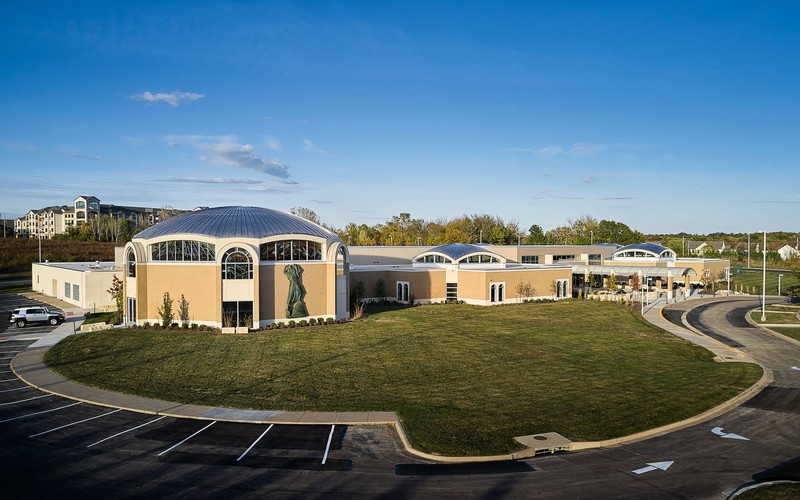
The second annual dinner dance, 1872
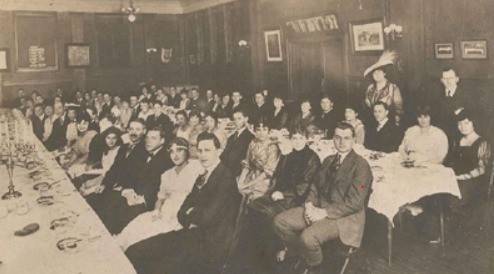
The 1908 synagogue building in Kansas City, Missouri
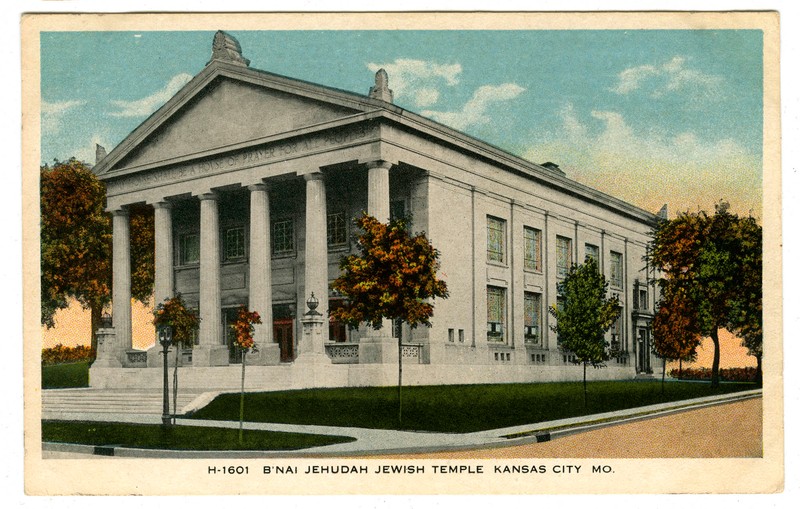
Backstory and Context
Text-to-speech Audio
Congregation B’nai Jehudah has historically had the largest number of members among local Jewish congregations. Throughout its significant history, B’nai Jehudah has committed to extending a lively, welcoming home to its congregants. However, the temple has faced many uncertainties and challenges in its early stages. One of the earliest challenges was employing a consistent rabbi. The first permanent building was constructed in September 1875. In 1876, the head rabbi left to pursue a job in Ohio, so the congregation came up against a situation of a substantial mortgage on the new building in addition to finding a new rabbi. The temple stood empty that year after no avail of hiring a new head rabbi. Close to half of the congregation's members withdrew support during this period without a rabbi and membership dropped to a mere 22 families by early 1877. Rabbi Ignatz Grossman was hired in 1878 as B’nai Jehudah’s first ordained Rabbi and has been the only individual in the Congregation’s history to act as rabbi and cantor at the same time. Nonetheless, he made an enormous positive impression at his first Rosh Hashanah service that by nine days later on Yom Kippur he had attracted 28 new members. After a two year period of leadership, Rabbi Grossman moved to Chicago. He was succeeded by Rabbi Elias Eppstein, who soon proposed a five day long fundraiser, and it was successful enough to retire the mortgage with money left over. By fall of 1880, B’nai Jehudah constituted 90 families, and it seemed the congregation was once again prospering.
B’nai Jehudah’s first permanent building was constructed in September 1875. Talk of a permanent home for the congregation started in 1873 though two hindrances laid in the way of realizing that goal. Due to a nationwide financial panic in the fall of 1873, the city’s banks closed down. The following summer, a locust outbreak destroyed the midwest’s crop harvest. The Congregation’s Hebrew Ladies’ Relief Society held a two-day-long festival in May 1874 to raise funds for the construction of a new building. It successfully raised $860, and a year later, there were sufficient funds to establish a building. The congregation’s new home was located at the southeast corner of Wyandotte and Sixth street. It was built in five months, with contributions of gas light fixtures from the current president Louis Hammerslough while the ladies of the relief society supplied the organ, carpets, ark curtain and Torah covers. On September 24, 1875, the new temple was dedicated. The Kansas City Times newspaper covered the commencement as important local news:
“The building is a perfect model of architectural beauty, and it is complete and elegant in all its appointments. It is constructed on acoustic principles and is admirably adapted to speaking or singing. The audience room will seat comfortably about three hundred and fifty people. The aisles are covered with a most beautiful carpet. The organ and choir are located in the gallery, in the rear of the room.”
B’nai Jehudah occupied its first permanent home for the next ten years, encompassing new challenges and a return to hopefulness and stability.
B’nai Jehudah sold its first temple at 6th and Wyandotte in the spring of 1883 with larger, grander ambitions in mind. The southwest corner of 11th and Oak Street was chosen for the new location. Money and troubles with construction scheduling proved to be a significant challenge. Again, the congregation held a successful fair and raised sufficient funds. The new building, once constructed in 1885, was a significant upgrade from the previous location. Although the Oak Street temple displayed modern design and improvement in size, it only served as the Congregation’s home for 23 years. Kansas City was seeing a massive amount of growth, and in 1905 B’nai Jehudah began to explore a new home. The new location was a site at the southeast corner of Linwood Boulevard and Flora Avenue. A design of “pure classic style” was approved by the congregation and the new building was erected in May of 1907. The Linwood Boulevard Temple stood for nearly five decades until the congregation moved south to 69th and Holmes in 1957, when B’nai Jehudah purchased 5.5 acres on the east side of Holmes Road, next to a public park and the Rose Hill Cemetery. The Architectural Record magazine featured B’nai Jehudah’s new building in its July 1969 issue admiring its structure. The temple stood for many successful years until B’nai Jehudah moved to its current location on Nall Avenue in Overland Park.
Throughout its long history, the congregation has enjoyed an unparalleled richness and diversity. Currently, B'nai Jehudah's community is vast in that there are so many opportunities to be involved including an array of programs, youth groups, trips to Israel, classes for college students and young adults all the way through senior adults, and Sisterhood and Brotherhood organizations. Members are able to enjoy a range of programming that reaches to every member, throughout the city and across state boundaries. The core purpose of B’nai Jehudah is to nurture Jewish meaning, connection and continuity, and they have achieved that through constant dedication and determination through hardships and successes. B’nai Jehudah now celebrates over 150 years of history and tradition and continues to progress in its innovative thinking, strong leadership, and active community.
Sources
“A Moment in Our History.” The Temple, Congregation B'nai Jehudah, 15 Apr. 2021, www.bnaijehudah.org/a-moment-in-our-history-2/page/3/.
“History.” The Temple, Congregation B'nai Jehudah, 22 May 2018, www.bnaijehudah.org/about-us-2/history/.
Tigay, Alan M., and Catherine R Joslyn says. “The Jewish Traveler: Kansas City.” Hadassah Magazine, 19 June 2015, www.hadassahmagazine.org/2007/06/12/jewish-traveler-kansas-city/.
“Virtual Jewish World: Kansas City, Kansas/Missouri.” Kansas City Jewish History Tour, www.jewishvirtuallibrary.org/kansas-city-jewish-history-tour.
